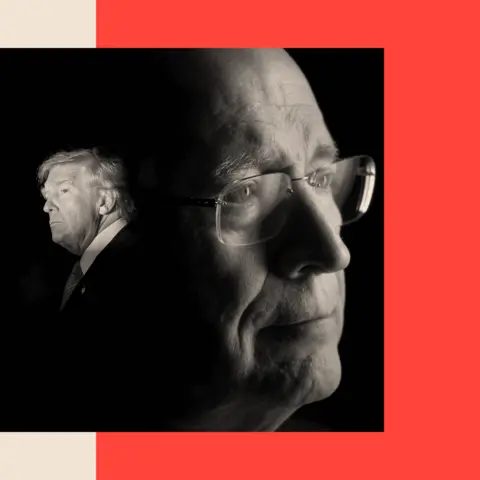Dick Cheney, the former vice-president who died on Tuesday, dramatically expanded the powers of the US presidency in the aftermath of the 9/11 terror attacks. More than two decades later, Donald Trump is wielding the political levers Cheney constructed as a potent tool to advance his national priorities - even as the two men had nasty personal clashes over the direction of the Republican Party.
Cheney's experience in US government stretched back to Richard Nixon's White House, and he honed his theories of presidential powers over decades of experience in the corridors of power in Congress and during multiple Republican administrations.
As vice-president during the George W. Bush administration, he used the Al-Qaeda attacks on the World Trade Center and Pentagon – the most consequential moment of American national unity and clarity of purpose since the Japanese Pearl Harbor attack of World War Two – to restructure the foundations of executive authority.
Cheney freed Bush to fight the 'war on terror' as he saw fit, driven by a shared belief that the government had to shake off old habits of self-restraint, former Washington Post reporter Barton Gellman writes in Angler, his 2008 book on Cheney's time as vice-president.

Now Donald Trump, who has inherited those expanded presidential powers, is using them to pursue his own political agenda. It's an agenda that has shocked portions of the American public the way Cheney's once did, but one that has, at times, run counter to the policies and priorities Cheney once endorsed.
Despite spending decades concentrating power in the White House, in the later years of his life, Cheney warned of the danger Trump posed to the nation, particularly after Trump's attempts to challenge his defeat in the 2020 presidential election. In 2024, Cheney said he supported Democrat Kamala Harris.
Trump, for his part, called Cheney the king of endless, nonsensical wars, wasting lives and trillions of dollars.
How Trump mirrors Cheney's playbook
The parallels between Cheney and Trump and their expansive deployment of presidential authority, however, stretch across the breadth of the American political landscape - in the use of American military power overseas, the ability to detain and transport non-citizens, and in the development and expanded use of US surveillance power, including focusing on perceived domestic threats.
While Trump has renounced Cheney's interventionist foreign policy and the Iraq War he oversaw, he – like Cheney – has demonstrated a willingness to use American military power abroad in ways that often flout attempts at oversight.
Critics had accused Cheney's Bush administration of stretching the boundaries of the 2001 Authorization of Military Force in the War on Terror to permit US military operations against suspected terrorists across the world. Now Trump is using similar means – drones and missiles – without even that slim cover of congressional approval.
The government's surveillance powers have also been focused on foreign nationals with legal authorisation to enter the US – revoking residency permits and work visas for those the administration has deemed to hold anti-American or antisemitic views.
Within hours after Cheney's death, flags at the White House were lowered to half staff - a display of national mourning mandated by federal law. The move, however, obscures the dramatic rift that had formed between the conservative old guard of Cheney's era and the new Republican Party that Trump has fashioned in his image.



















